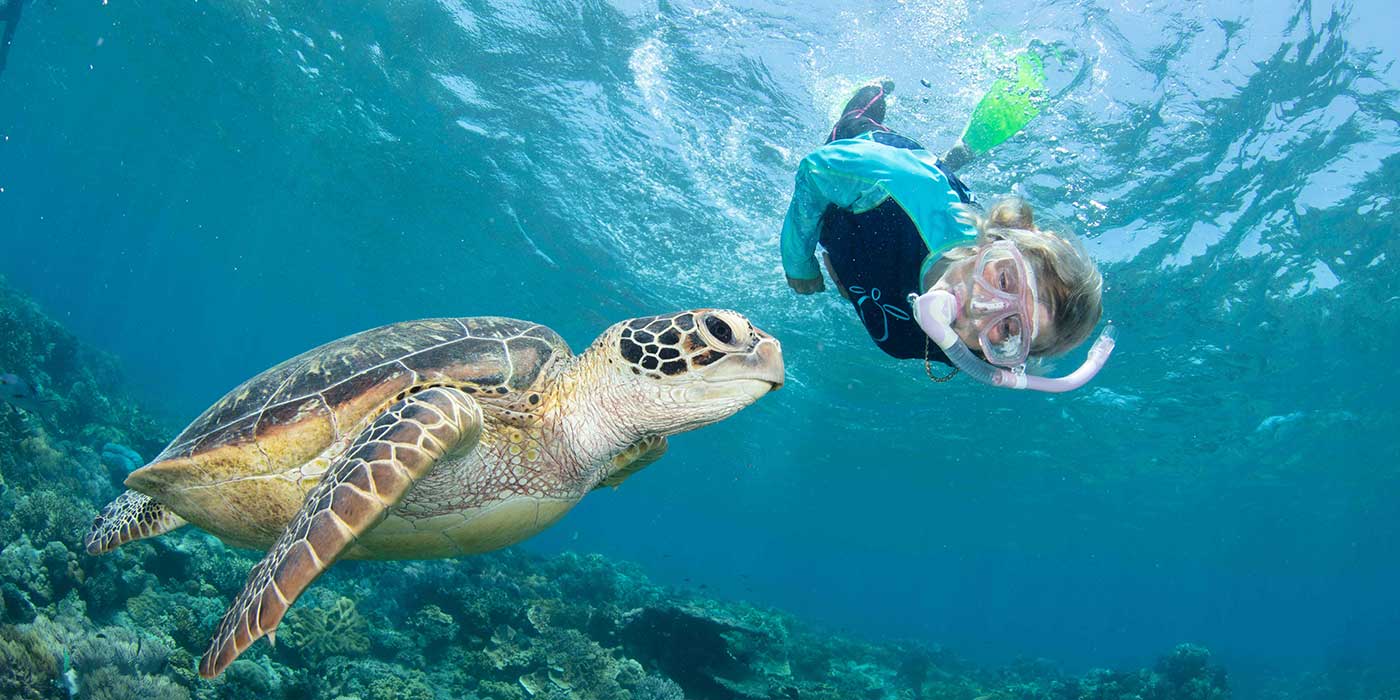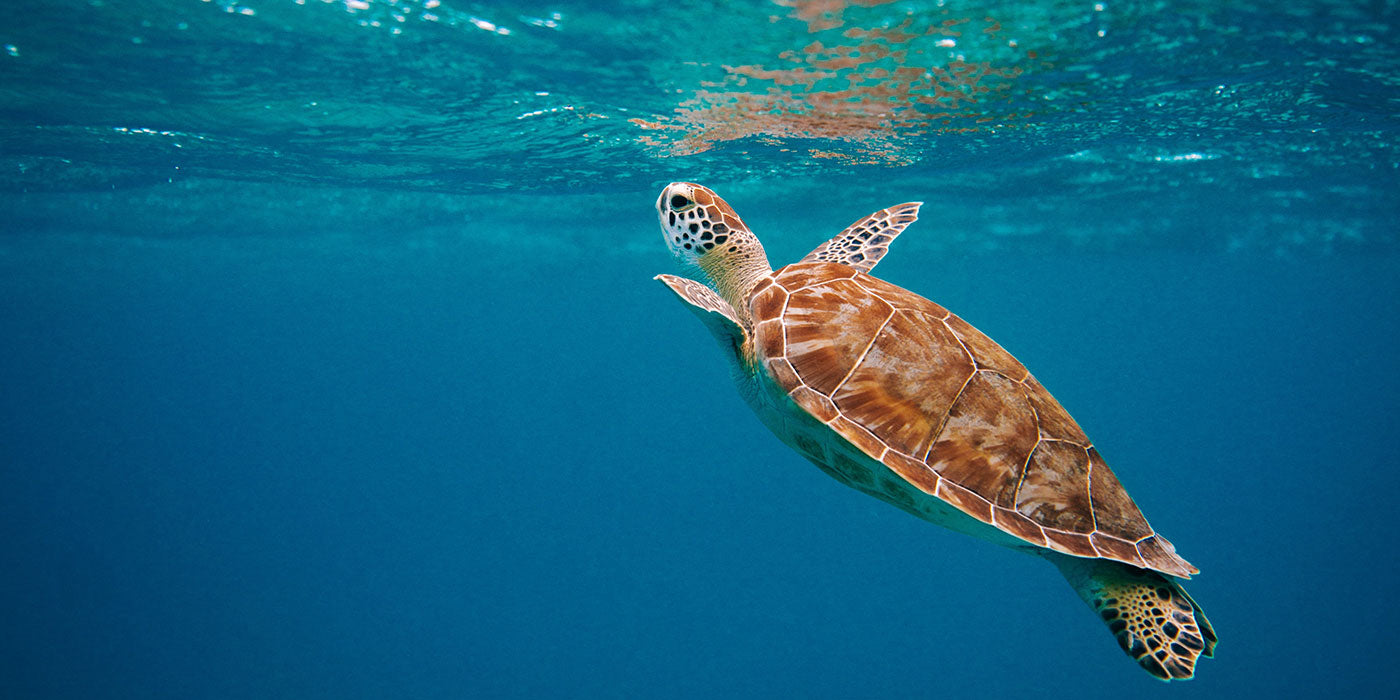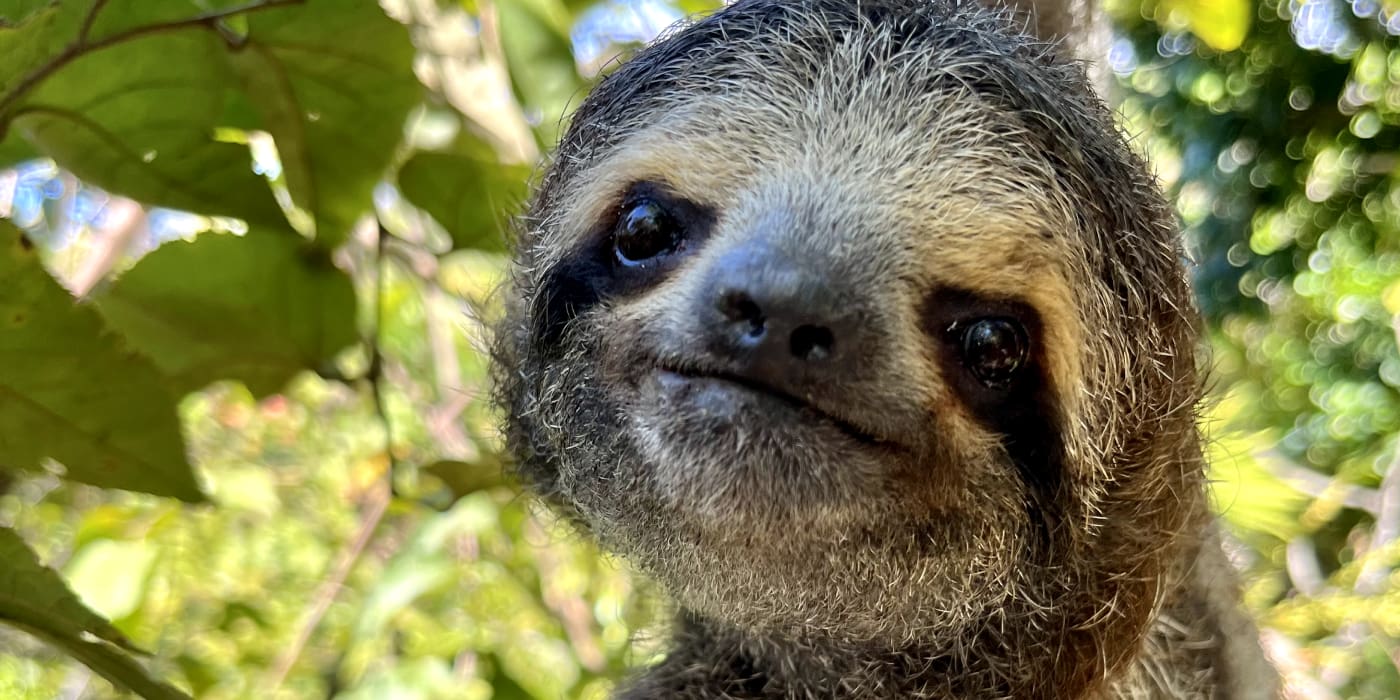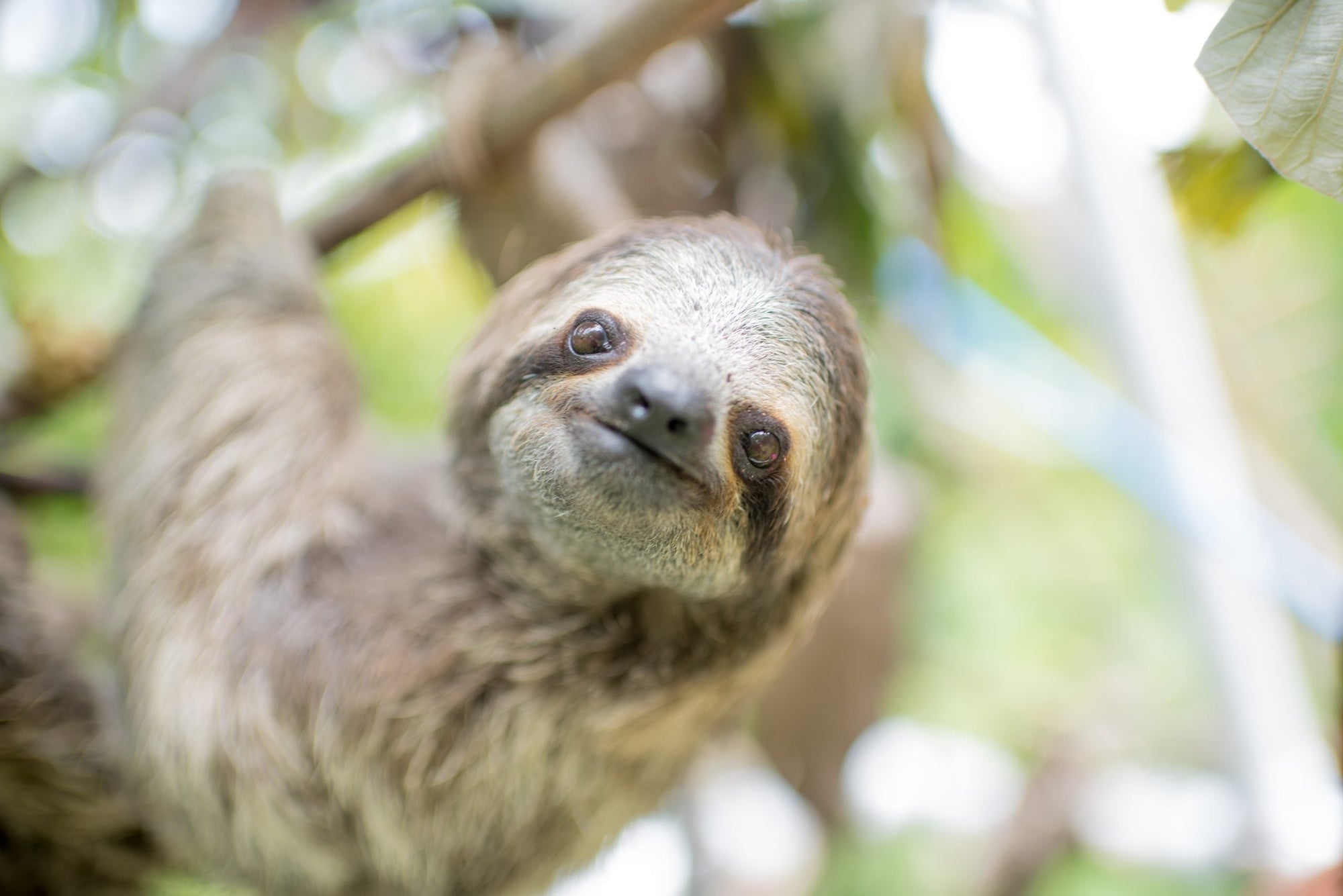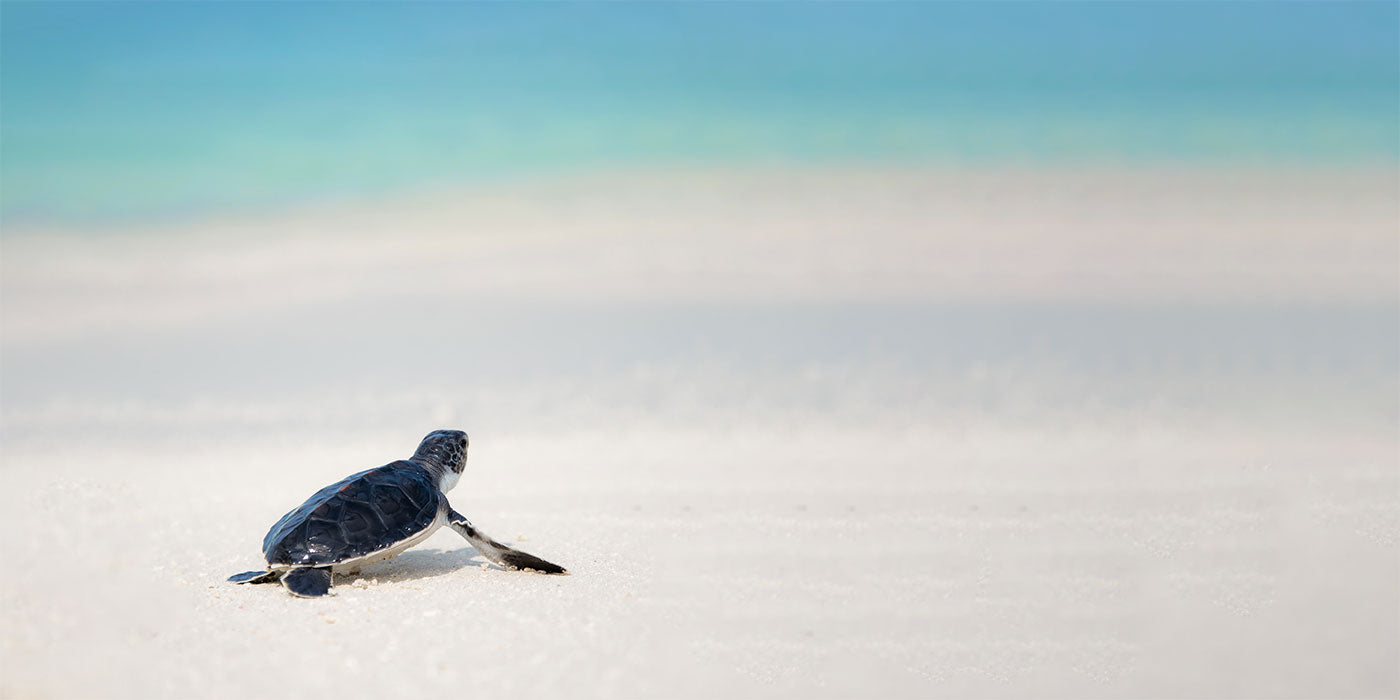

Charming Sea Turtles
Turtles have been on this planet for 150 million years, lived through the era of dinosaurs and survived an ice age. Of all surviving reptiles, they are the oldest. Now, human actions are driving them into an endangered status that threatens their existence, but dedicated volunteers are devoting their lives to rescue sea turtles around the world.
An Ancient Survivor
Sea turtles are ancient species who have been roaming our oceans for about 150 million years, way before the first humans emerged. With their winglike front flippers, they gracefully soar through the water, sometimes crossing entire oceans. These tough fighters have survived some of the worst extinction events in the history of the planet, including the ravaging asteroid that smashed into Earth and wiped out the dinosaurs 65 million years ago. The sea turtle's persistence and ability to survive have made them the oldest of all surviving reptiles, but now, their population has vastly decreased. This is mainly a result of new anthropological threats caused by humans plundering the seas, exploiting the coastlines and heating the planet.
Hatchling to Adult
From the moment sea turtles come to life, they face dramatic threats that force them to fight for survival. Being a small hatchling makes the tiny turtles easy targets, and it’s believed that only one out of a thousand survive to be an adult.
The first two things they have to go through to begin their lives are exiting and emerging. To break the eggshell’s inner surface, the baby sea turtles use a small bump on the tip of their snout to make a hole and climb through the opening. After breaking out and digging through the material covering the nest, the hatchlings immediately aim for the horizon and find their way down to the shore
via the reflections of the moon and stars on the water. The hatchlings all emerge en masse and create a spectacular scene in the sandy nest, that in some areas is known under the term “turtle boils”. During this event, they are exposed to local predators, such as sea birds, snakes and crabs, but since the hatchlings crawl in unison, they lower the risk of getting attacked.
Sea turtles spend their lives in the ocean and it takes decades before they reach sexual maturity. Since they are air-breathing, they have lungs and regularly swim to the surface to breathe. While some sea turtle populations nest and feed in the same general areas, others travel a great distance to get to the sandy beaches where they build their nests. These remarkable journeys can take them thou- sands of kilometers away, and to navigate the long way, they use geomagnetism and an internal GPS. By using geomagnetism and sensing the magnetic field to interpret magnetic parameters, it’s like the sea turtles possess an inner magnetic compass. This allows them to determine and maintain a specific magnetic heading or orientation.

The Journey from Feeding to Breeding Grounds
It’s not unusual for a sea turtle to cross an entire ocean. An individual that was once spotted in Japan, can later be spotted off the coast of Mexico. During their journeys, they are at risk of being attacked, but their big body size offers shelter from predators and helps the sea turtles move great distances. In the ocean, they also face the threats caused by climate change and pollution, such as plastic waste.
Drifting plastic bags are sometimes eaten, and they also risk crawling through plastic waste and getting stuck in it while swimming.
After mating at sea, the females return to land and come ashore to dig a nest and lay her eggs. In some cases, she returns to the exact same beach where she hatched herself. After digging a nest using her back flippers, she stays for a couple of hours and lays up to 100 eggs before covering up the nest and slowly dragging herself back to the ocean. 60 days later, the hatchlings are born.
A Threatened Species in Need of Help
Unfortunately, a long history of poaching for meat, eggs and the shells have shrunk the population to a fragment of what it once was, and human threats continue to put the population to distress. For example, light pollution from nearby hotels, restaurants and other facilities can confuse the baby sea turtles and cause them to run in the wrong direction.
Aside from being threatened by coastal development, the nesting grounds are vulnerable to weather changes. In the case of extreme events, such as flooding or hurricanes, the nests can be destroyed. Scientists have also seen a shift in the male to female ratio that can have a negative effect on genetic diversity, since the temperature of the sand determines the gender of the baby sea turtle. The warmer the sand, the more females are produced.
Plastic waste is among the biggest threats to sea turtles. One of the sea turtles favorite foods is jelly fish, and ocean waste such as plastic bags get confused for food. They also digest microplastics and risk getting tangled up in ocean waste, such as fishing nets and old gear.
By regulations and behavioral changes, there is a better chance of saving the sea
turtles. During the Covid-19 pandemic, tourism came to a halt and beaches around the world were more peaceful than ever. This resulted in an increase in sea turtle nesting and in Thailand, the highest number of nests in 20 years was found.
Turtle Conservation
Around the world, volunteers are devoted to protecting the oceans and help wildlife such as sea turtles. For the upcoming year, Maria Nila has chosen to collaborate with two of them: Cairns Turtle Rehabilitation Centre, an organization that rescues, rehabilitates and releases sea turtles in Australia, and The Perfect World Foundation, a Swedish organization spreading awareness and supporting animal conservation.
The support from the public is essential for the organizations to survive, as many of them fully rely on donations, but for those who are unable to give financial support, there are other ways to help. Both organizations encourage people to educate themselves on the subject and spread the knowledge so that more people become aware. There are also several centers around the world that welcome the help from volunteers and rely on them to help with the run- ning of the center. If you’re planning a trip, investigate the opportunity to offer your support to local organizations.
Text: Anna Bergman







































